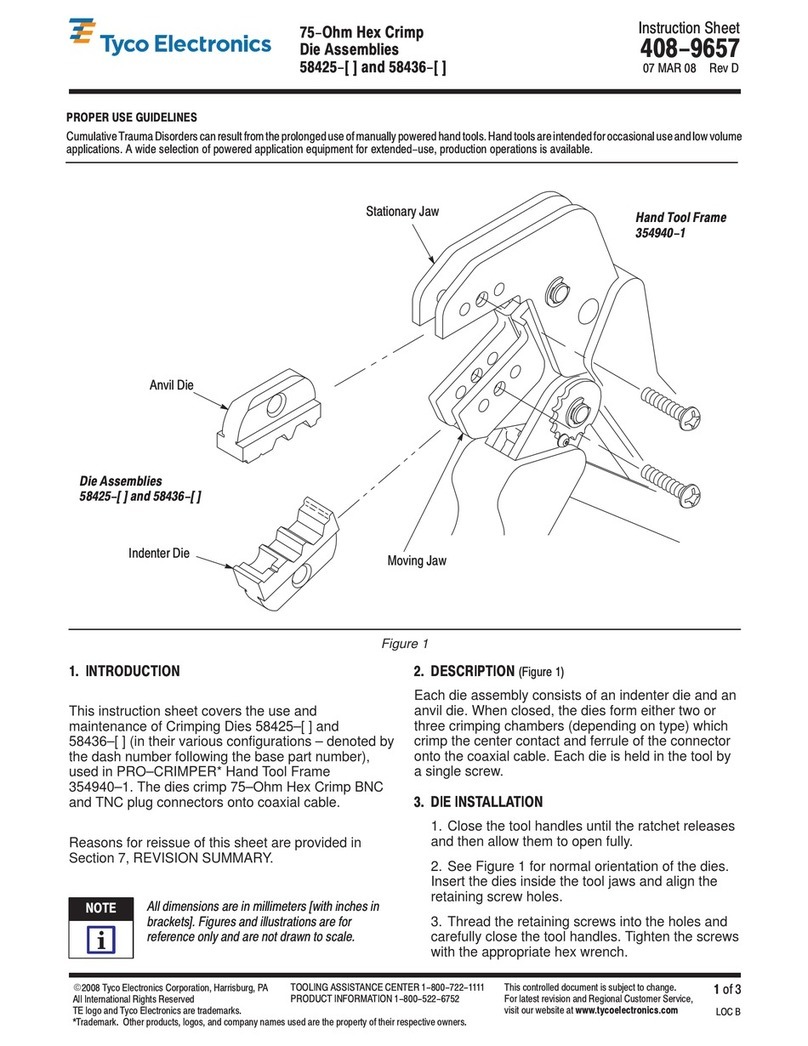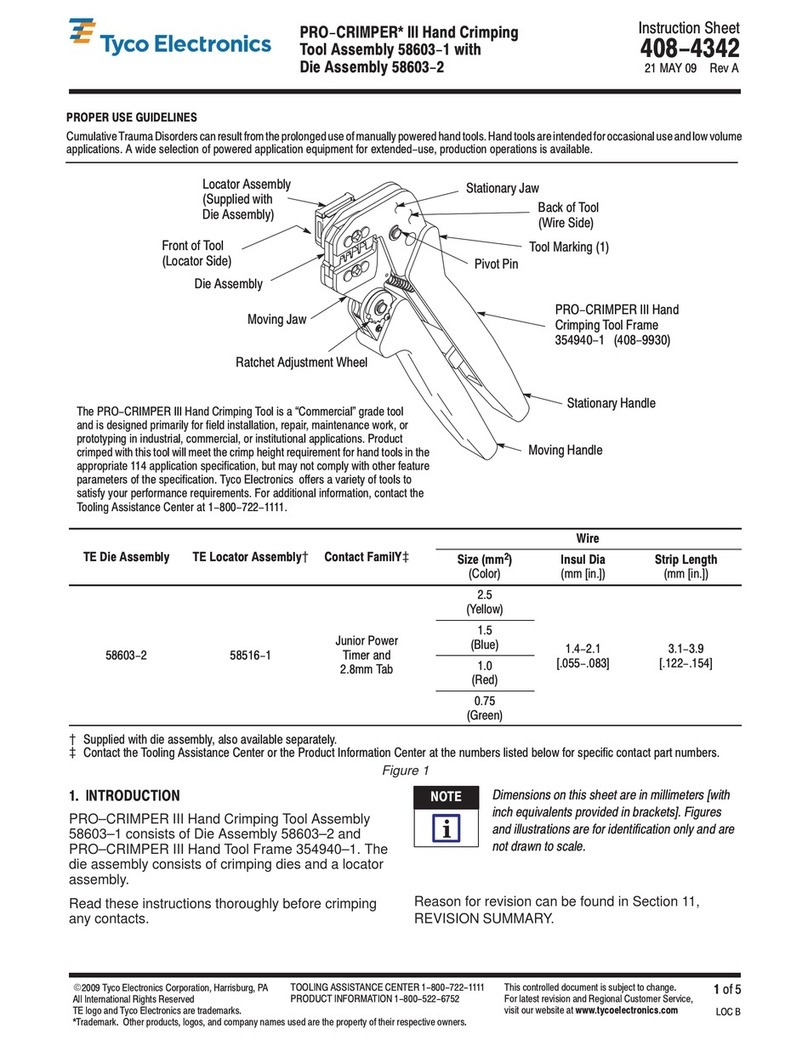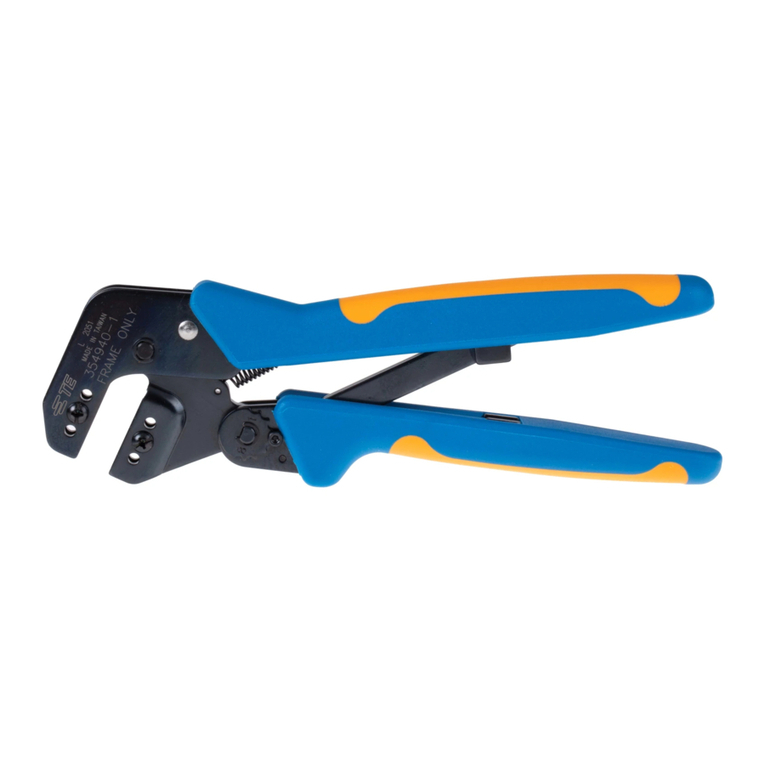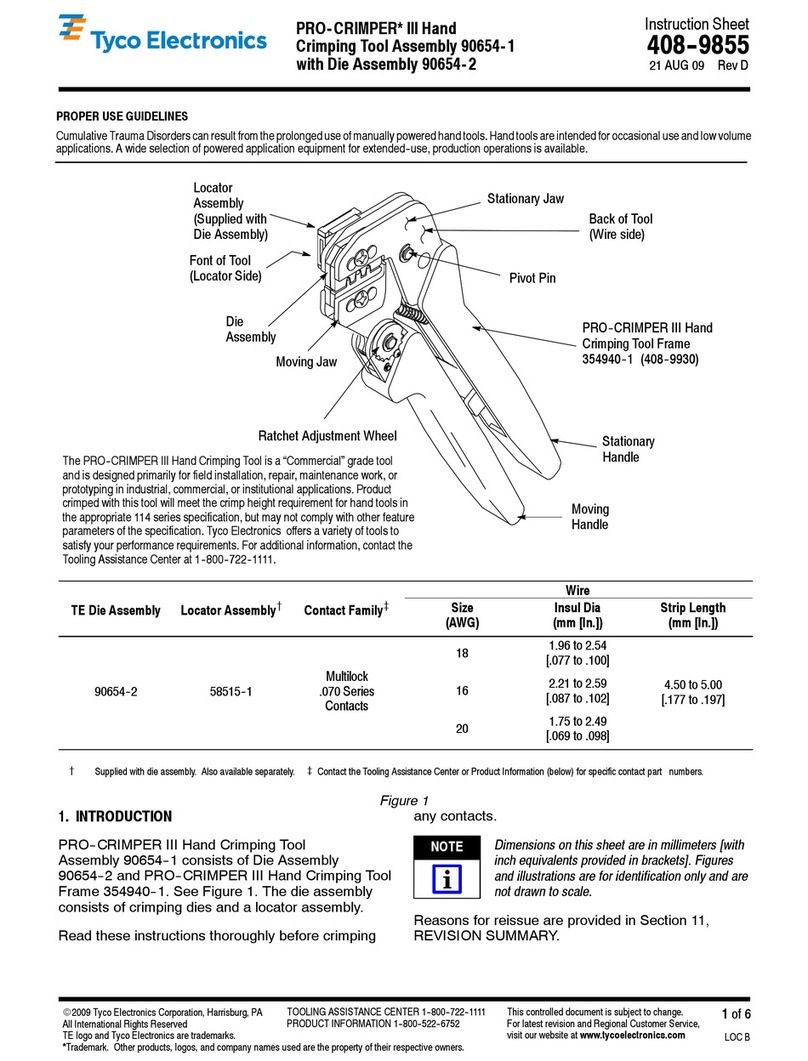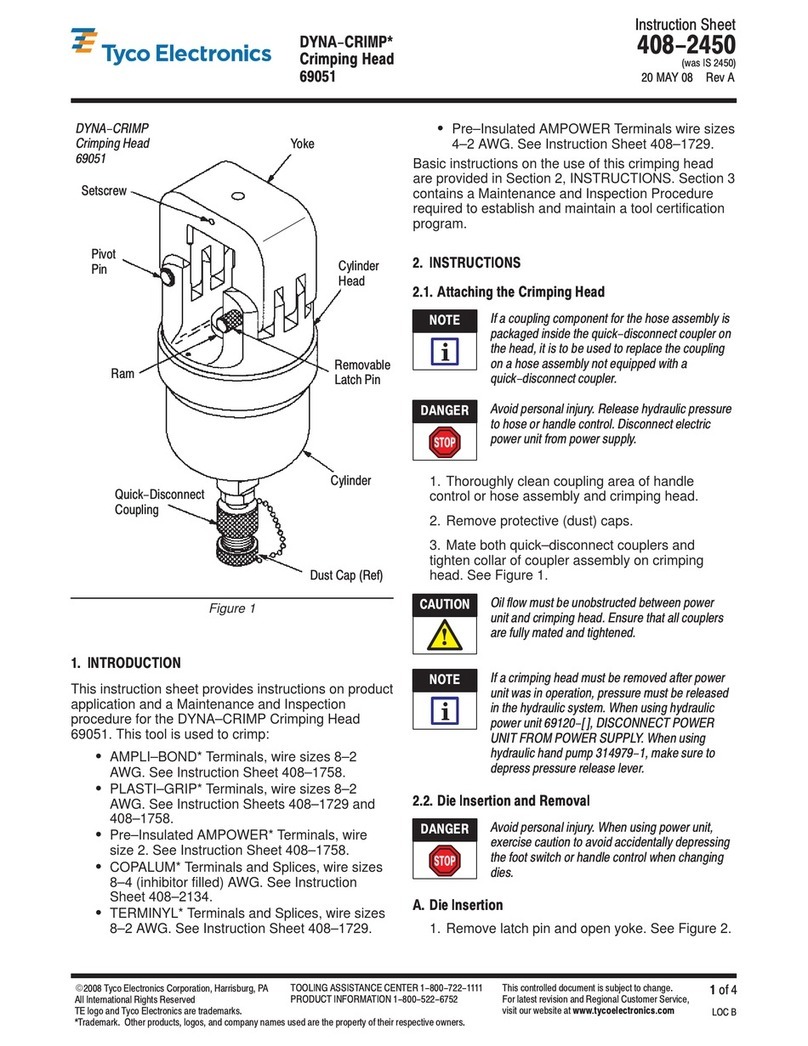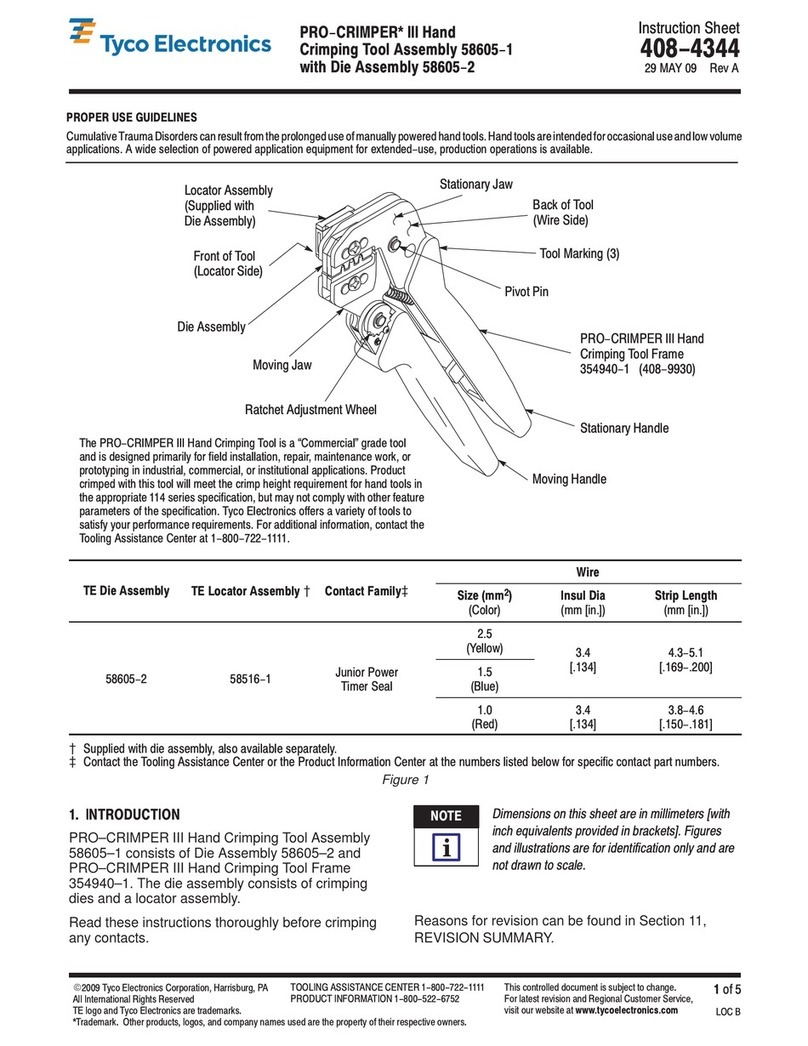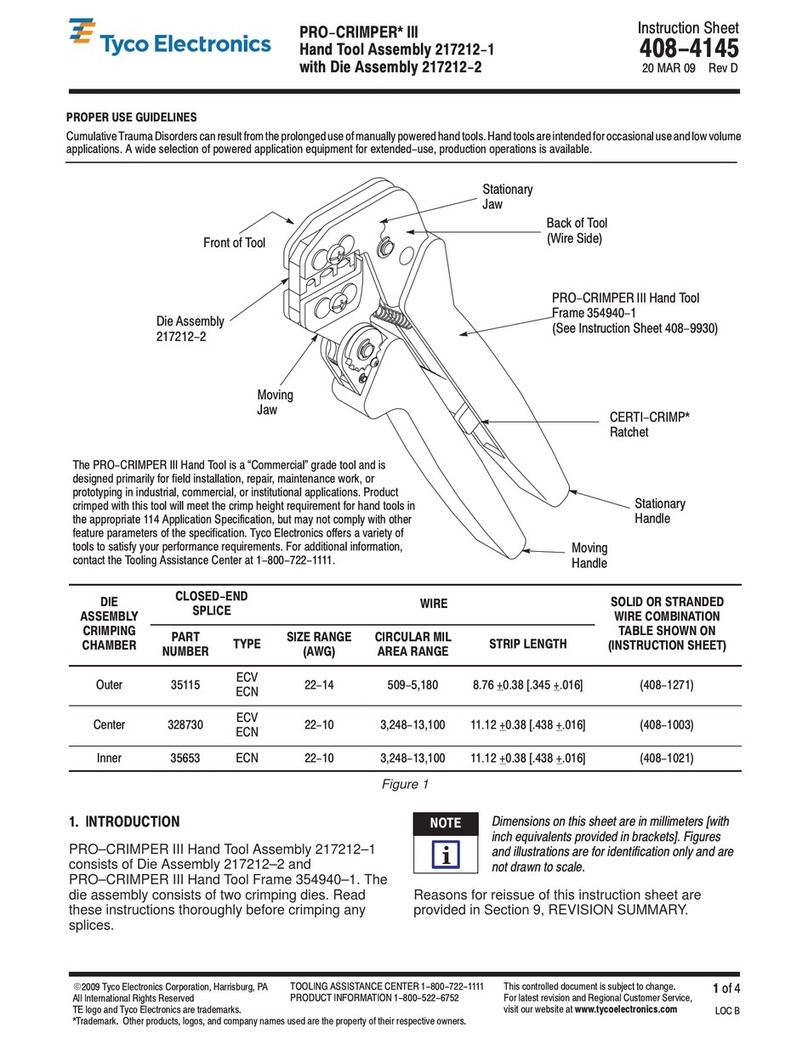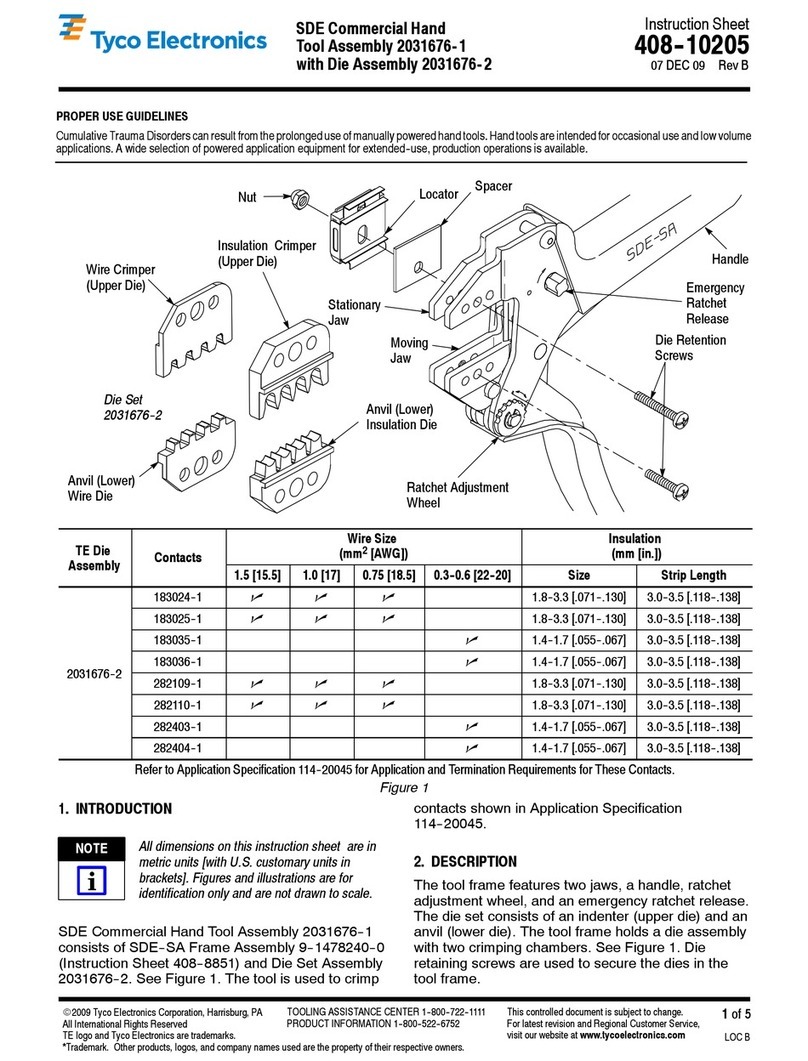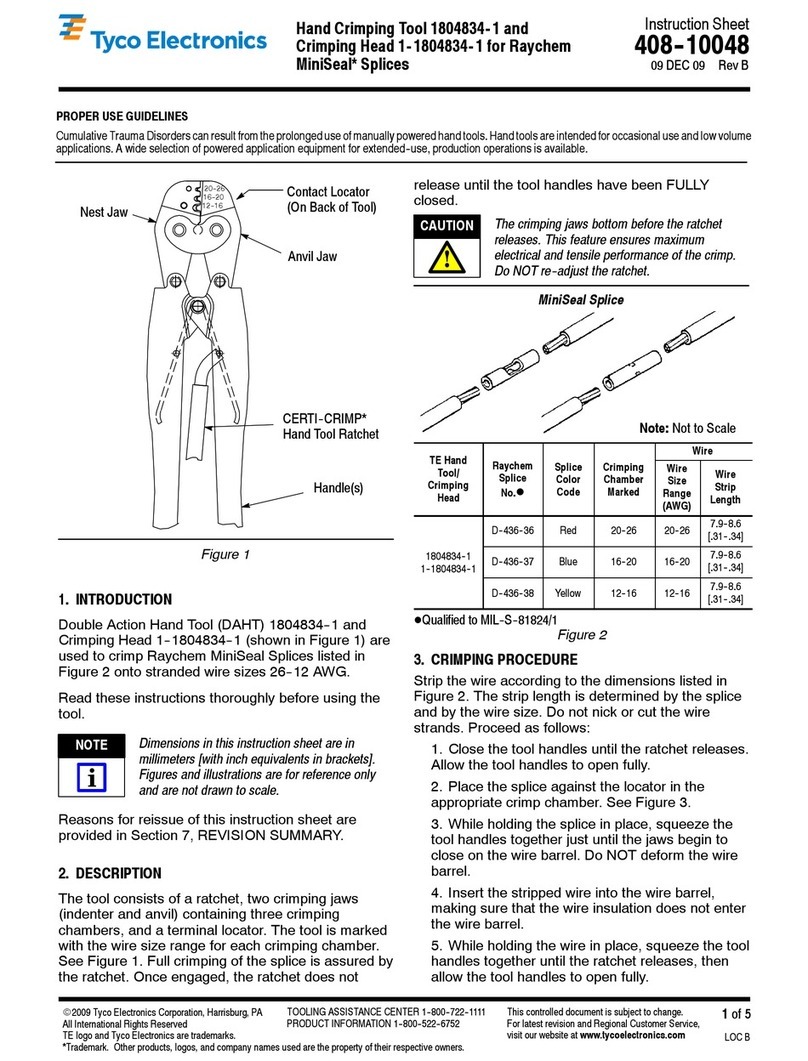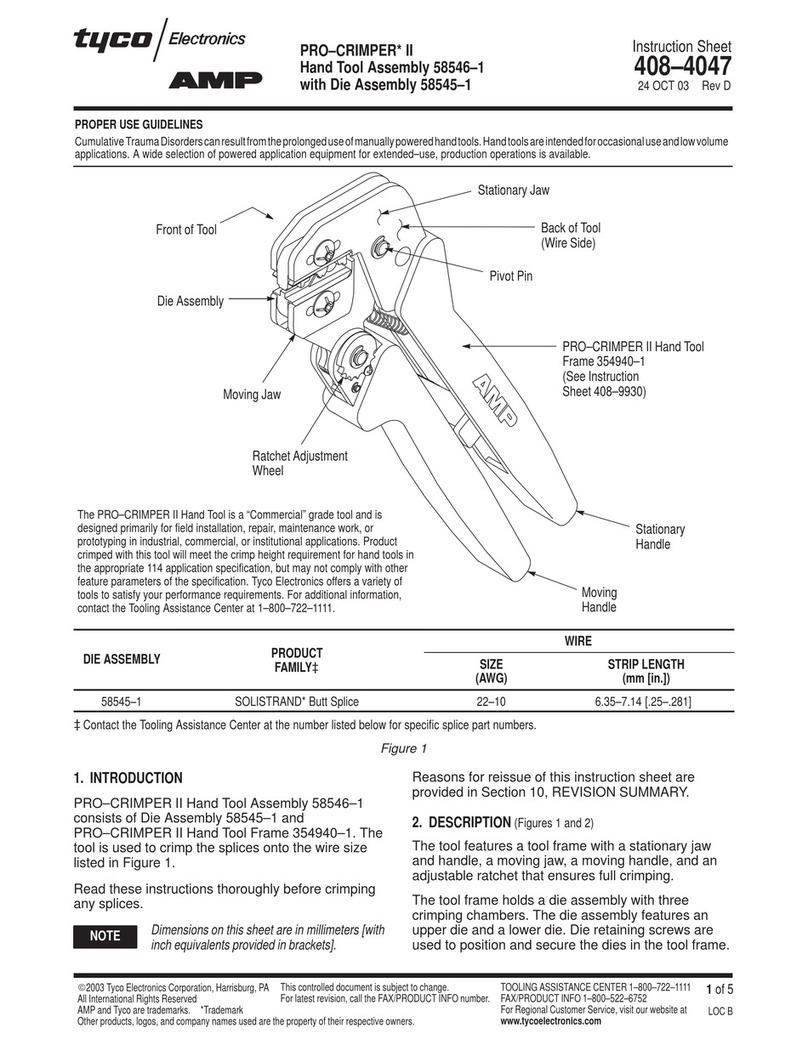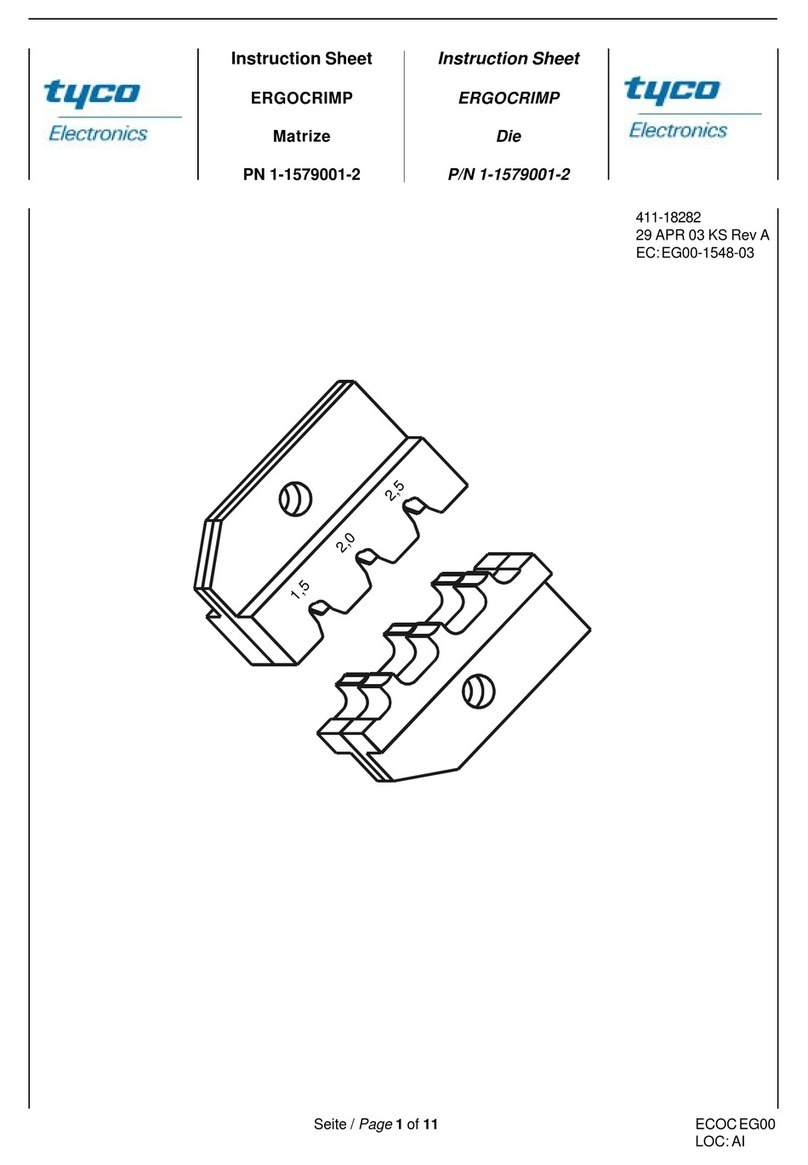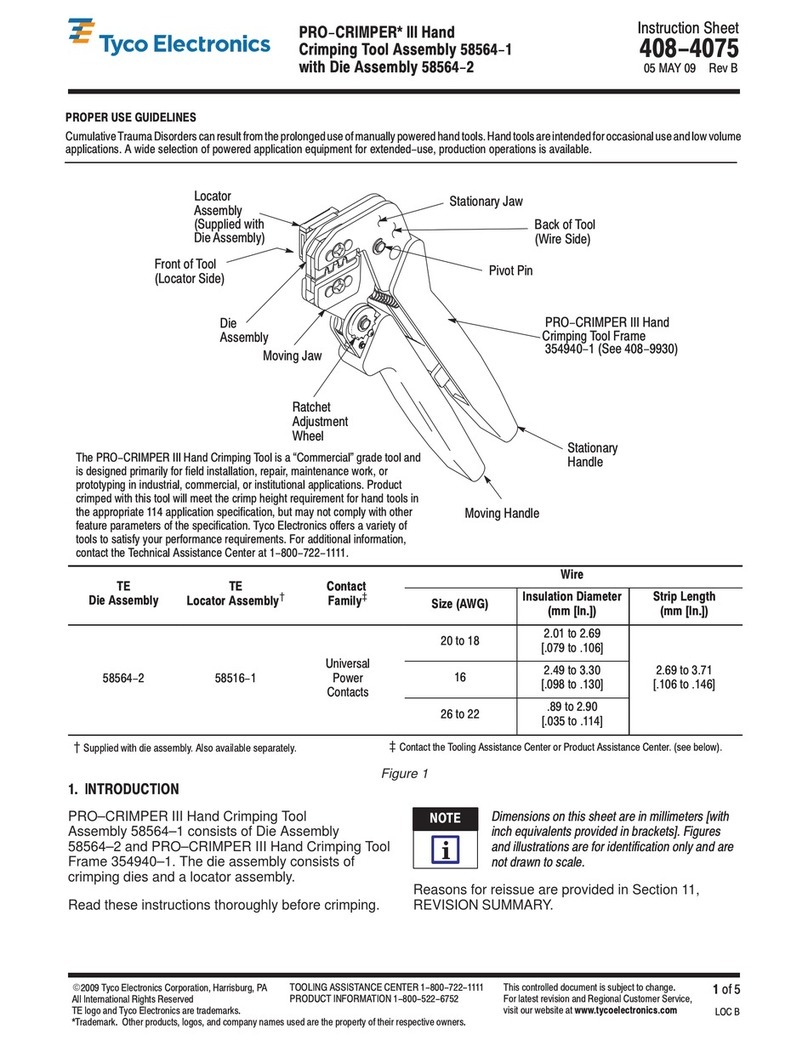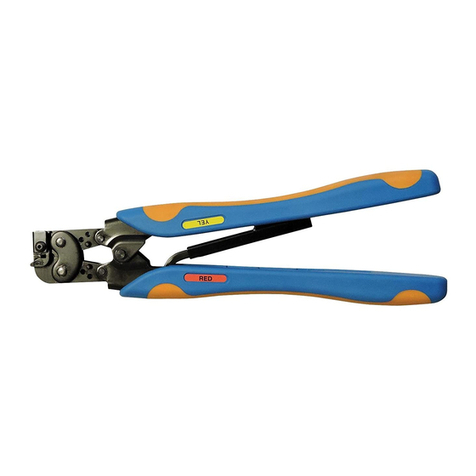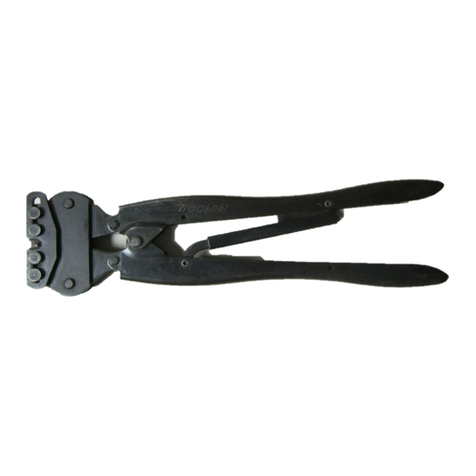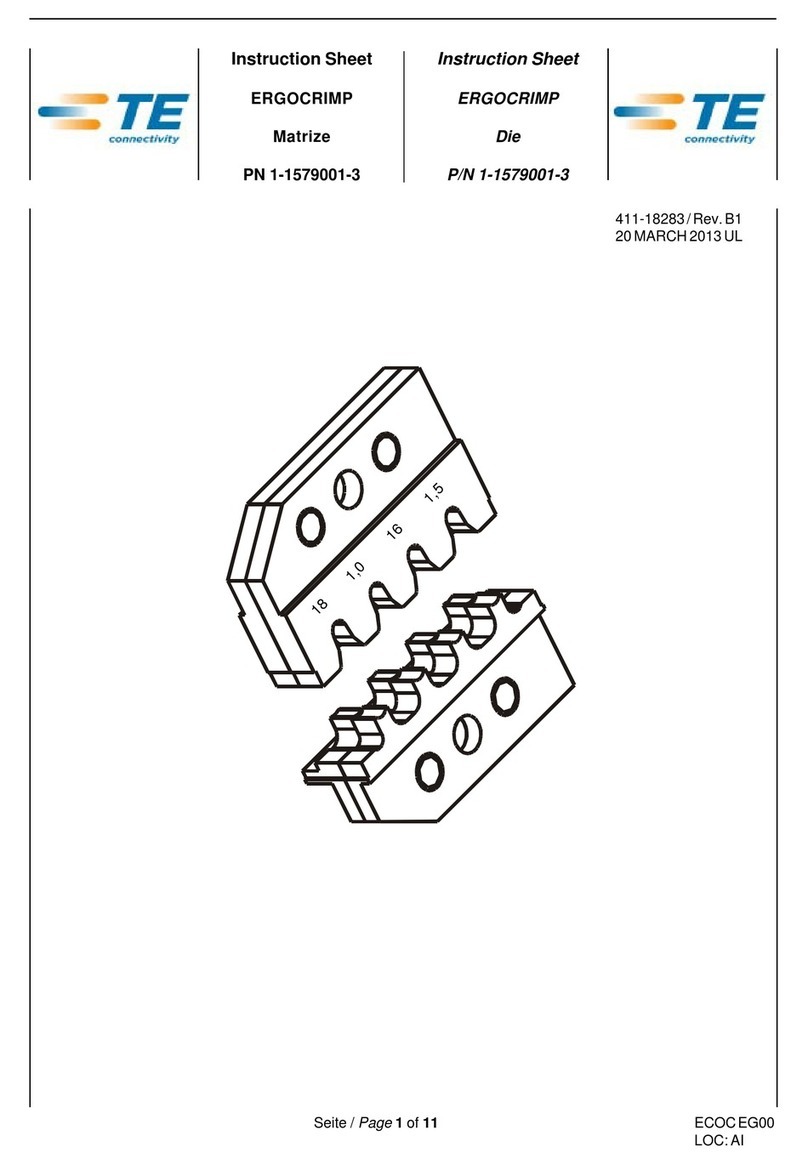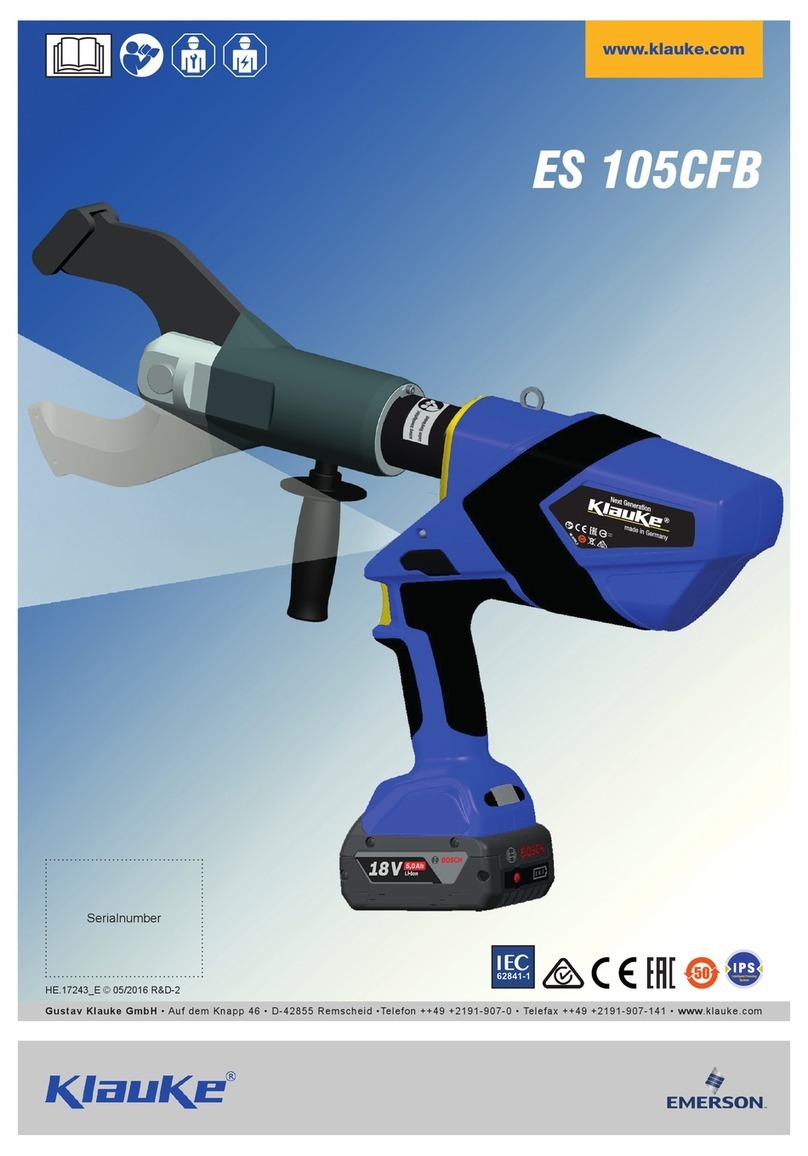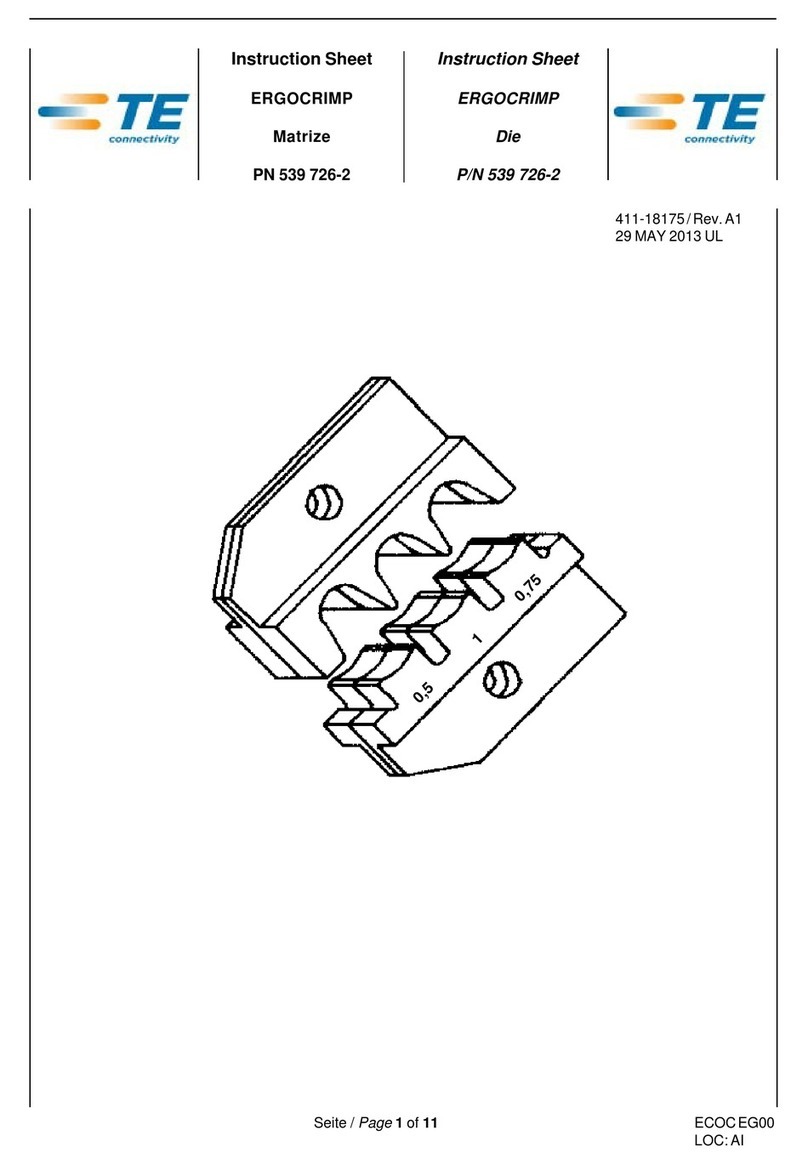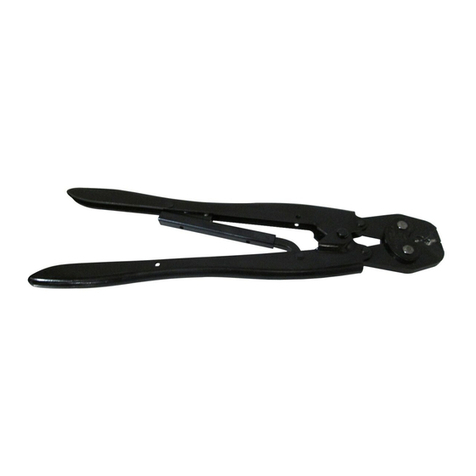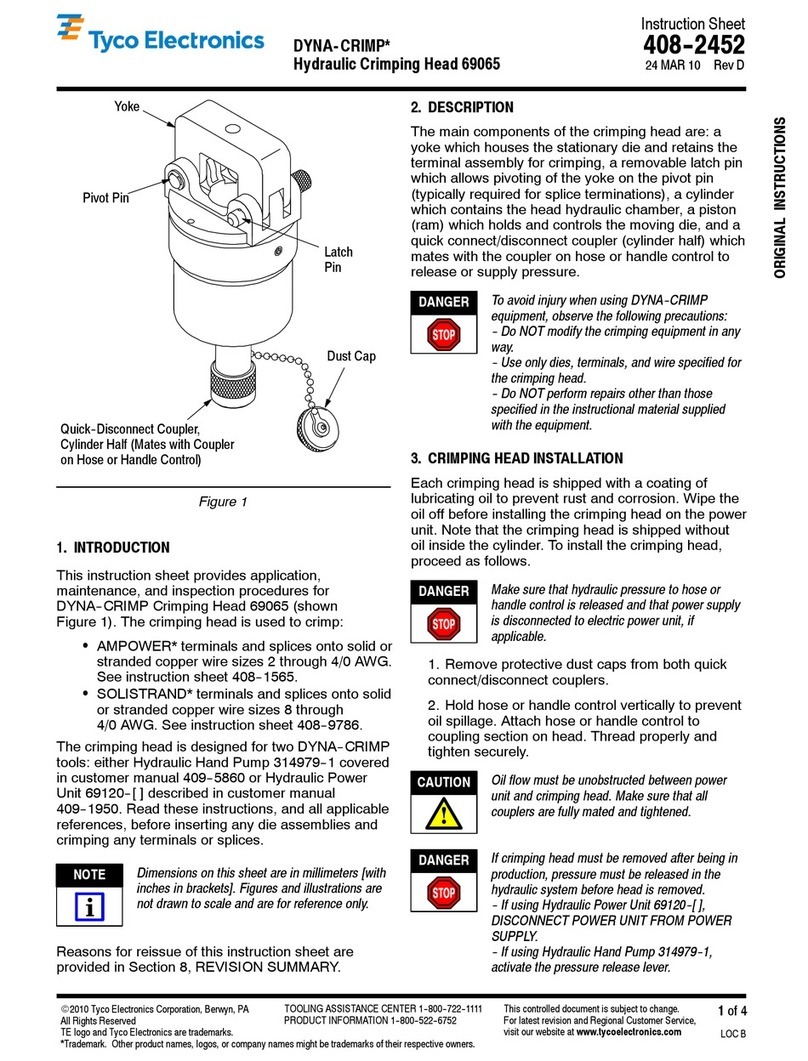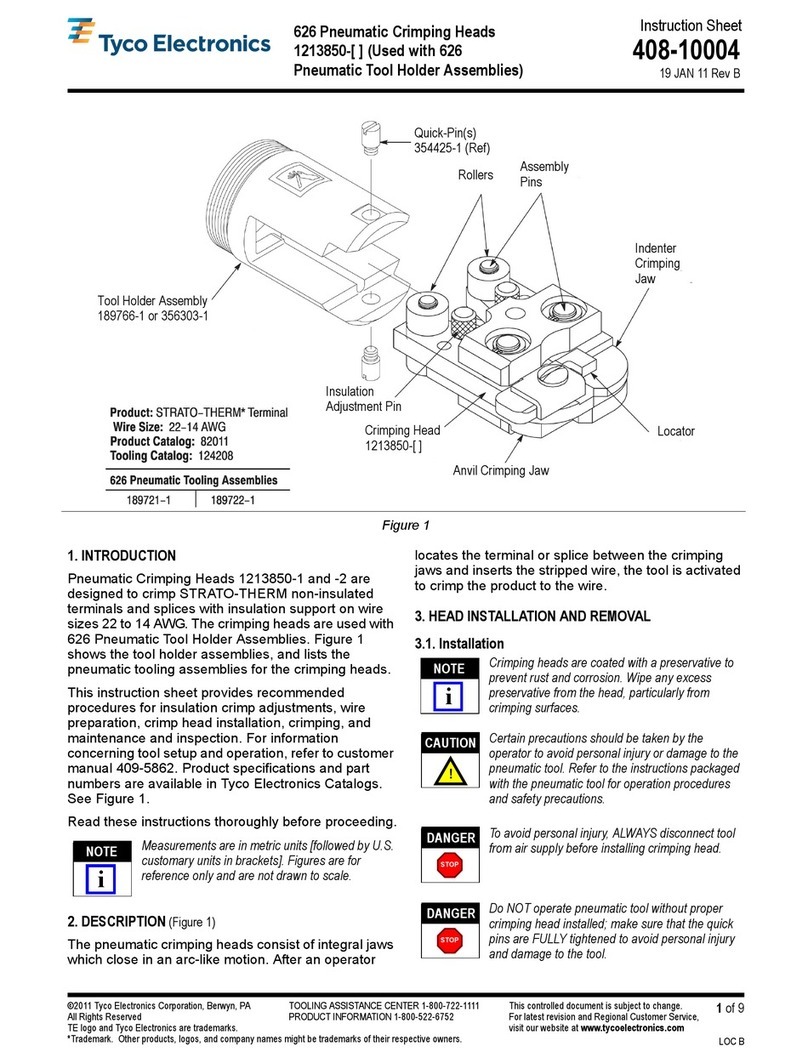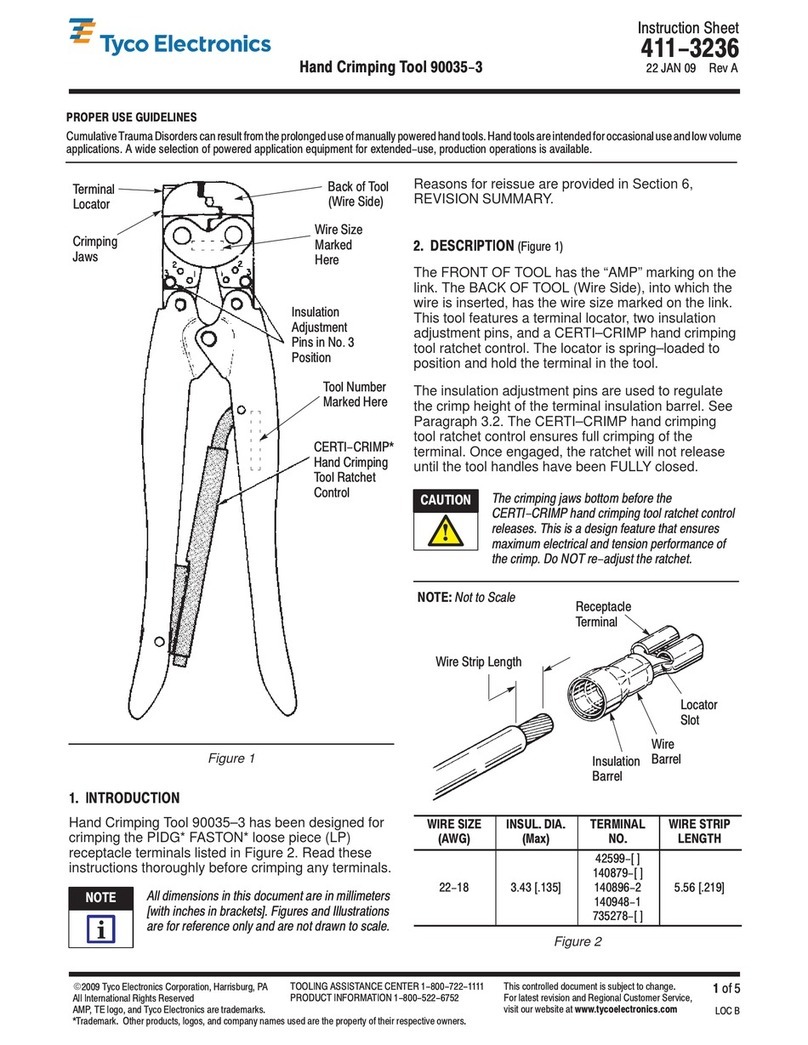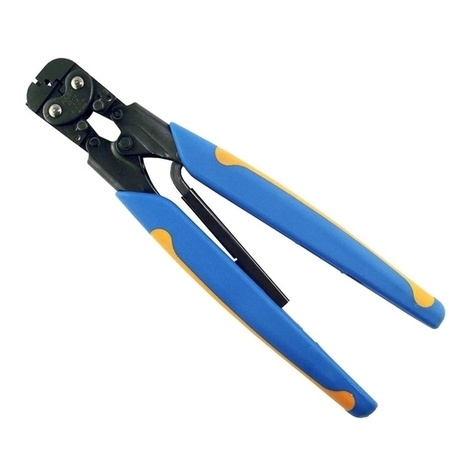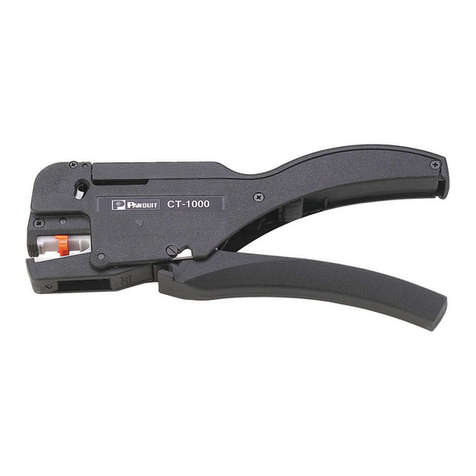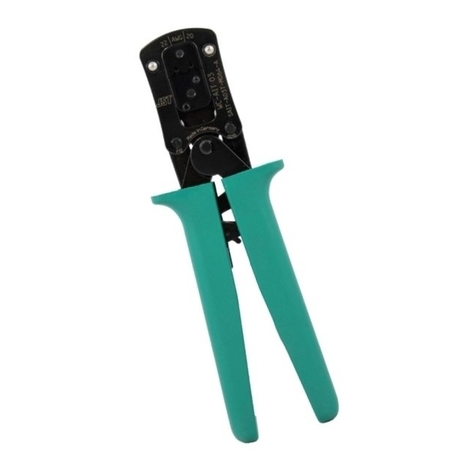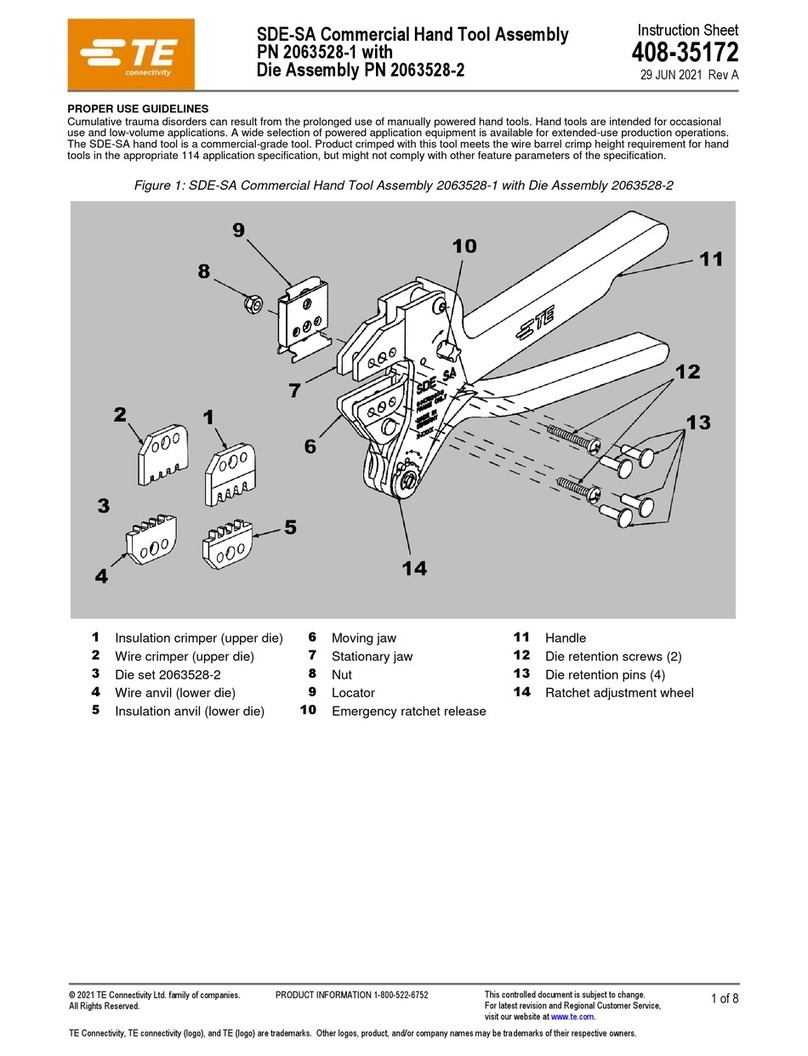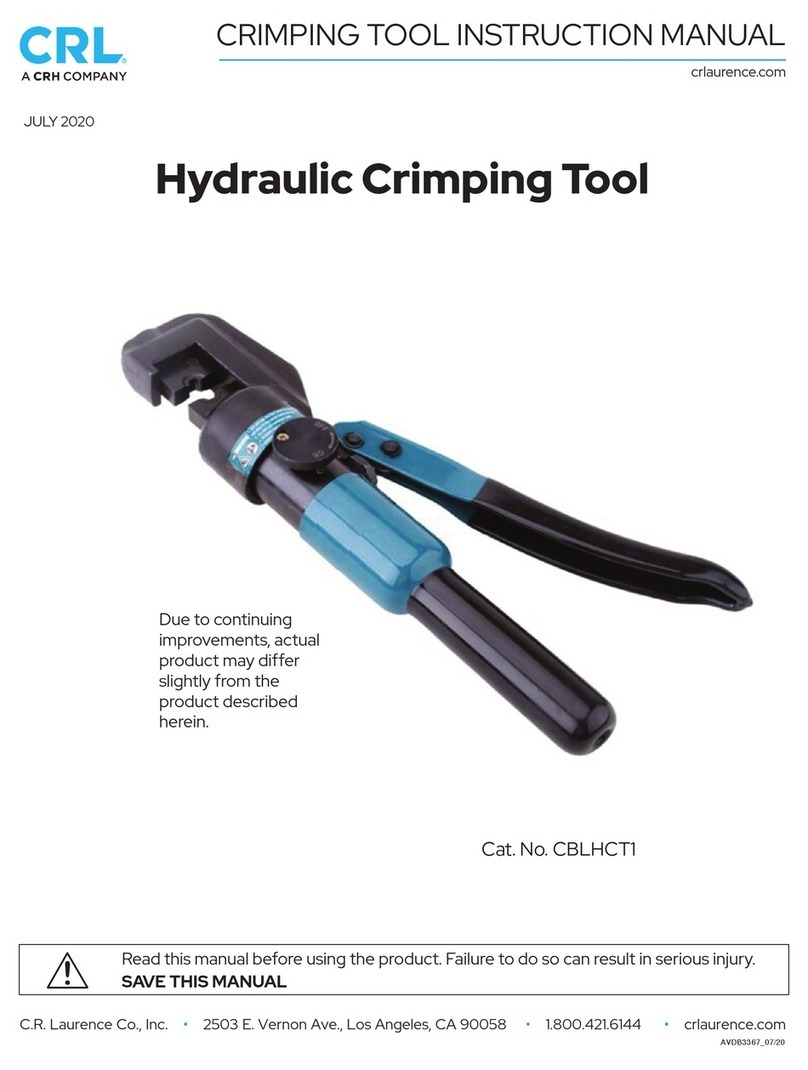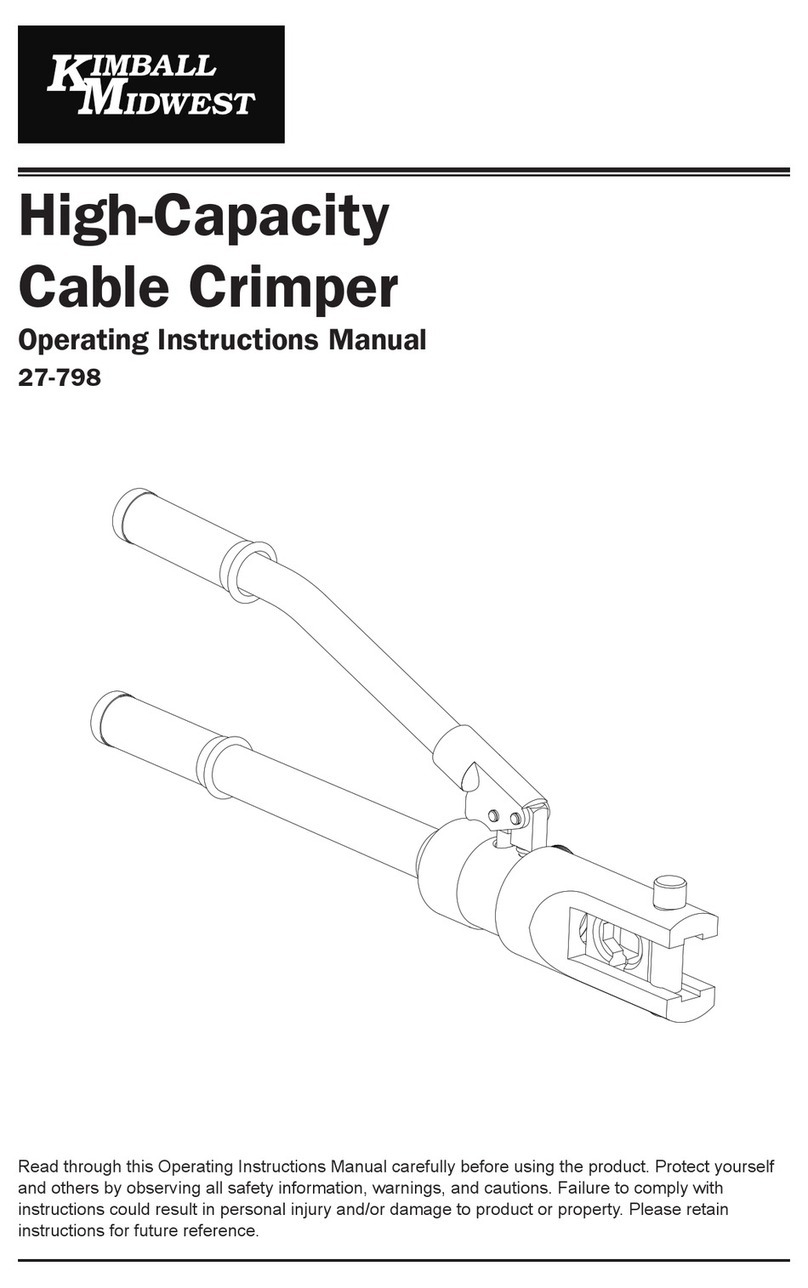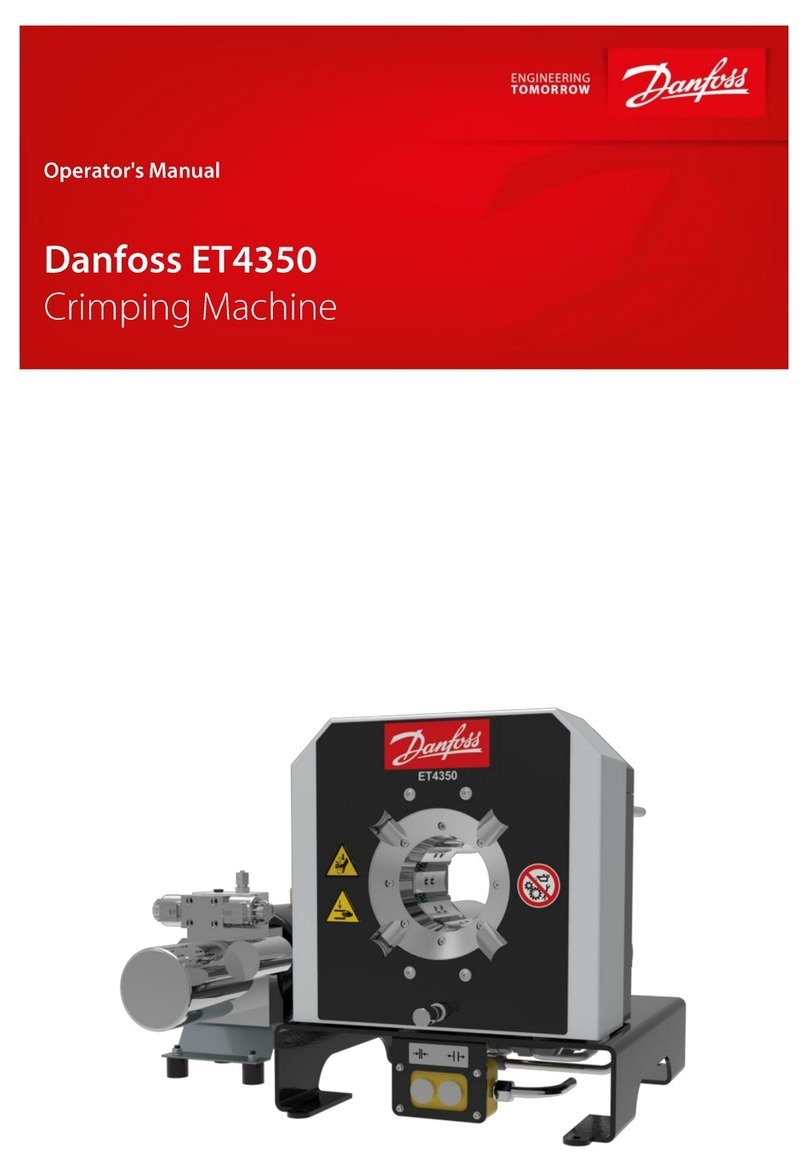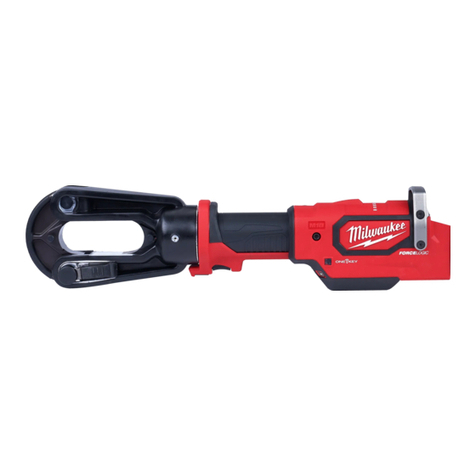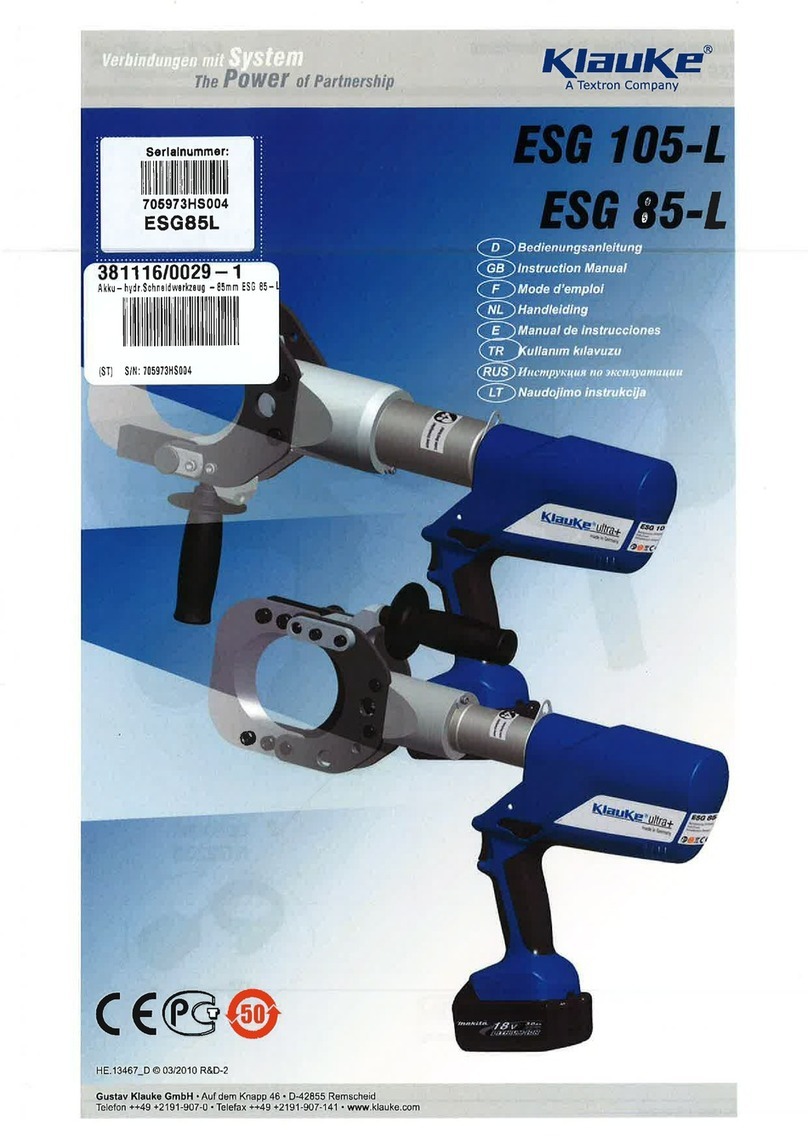
408-7909
Hand Crimping Tool 90301-2
3
of 4Rev
C
Tyco Electronics Corporation
Make sure all pivot points and bearing surfaces are
protected with a thin coat of any good SAE 20 motor
oil. Do NOT oil excessively. When the tool is not in
use, keep the handles closed to prevent objects from
becoming lodged between the dies, and store the tool
in a clean, dry area.
5.2. Periodic Inspection
Regular inspection should be performed by quality
control personnel. A record of scheduled inspections
should remain with the tool and/or be supplied to the
supervisory personnel responsible for the tool.
Though recommendations call for at least one
inspection a month, the inspection frequency should
be based on the amount of use, ambient working
conditions, operator training and skill, and established
company standards. These inspections should be
performed in the following sequence:
A. Visual Inspection
1. Remove all lubrication and accumulated film by
immersing the tool (handles partially closed) into a
suitable degreaser that will not affect paint or
plastic material.
2. Make certain all retaining pins are in place and
are secured with the proper retaining rings. If
replacements are necessary, refer to Figure 5.
3. Close the tool handles until the ratchet releases,
and then allow the handles to open freely. If they
do not open quickly and fully, then the spring is
defective and must be replaced (see Section 6,
REPLACEMENT AND REPAIR).
4. Inspect the tool, with special emphasis on
checking for worn, cracked, or broken crimping
dies. If damage to any part of the head is evident,
return the tool for evaluation and repair (see
Section 6, REPLACEMENT AND REPAIR).
B. Crimp Height Inspection
This inspection requires the use of micrometer, with a
modified anvil, as shown in Figure 4. The Crimp
Height Comparator RS–1019–5LP is recommended
and is available from:
Shearer Industrial Supply Co.
20 North Penn Street
York, PA 17401–1014
VALCO
1410 Stonewood Drive
Bethlehem, PA 18017–3527
or
Proceed as follows:
1. Refer to the chart in Figure 4 and select a
contact and a wire (maximum size) for each crimp
section.
2. Refer to Section 3, CRIMPING PROCEDURE,
and crimp the contact(s) accordingly.
3. Using a crimp height comparator, measure the
wire barrel crimp height as shown in Figure 4. If the
crimp height conforms to that shown in the chart,
the tool is considered dimensionally correct. If not,
return the tool for evaluation and repair (refer to
Section 6, REPLACEMENT AND REPAIR).
For additional information concerning the use of the
crimp height comparator, refer to Instruction Sheet
408–7424.
Position Point on
Center of Wire Barrel
Opposite Seam
Mo ifie
Anvil
A"
+0.05
[+.002]
CONTACT
N MBER (LP) WIRE SIZE
AWG (Max.)
CRIMP SECT
(Wire Size
Marking)
CRIMP
HEIGHT
DIM. A"
530553-5,-7
531216-2,-4
531224-7 22 26-22 0.76 [.030]
530901-3,-5,-7 28 32-28 0.56 [.022]
Figure 4
C. CERTI-CRIMP Hand Crimping Tool Ratchet Control
Inspection
Obtain a 0.025–mm [.001–in.] shim that is suitable for
checking the clearance between the bottoming
surfaces of the crimping dies. Proceed as follows:
1. Select a contact and
maximum
size wire for the
hand tool.
2. Position the contact and wire between the
crimping dies, as described in Section 3,
CRIMPING PROCEDURE.
3. Holding the wire in place, squeeze the tool
handles together until the CERTI–CRIMP ratchet
releases. Hold the handles in this position,
maintaining just enough tension to keep the dies
closed.
4. Check the clearance between the bottoming
surfaces of the crimping dies. If the clearance is
0.025 [.001] or less, the ratchet is satisfactory. If
the clearance exceeds 0.025 [.001], the ratchet is
out of adjustment and must be repaired.
If the tool conforms to these inspection procedures,
lubricate it with a thin coat of any good SAE 20 motor
oil and return it to service.

